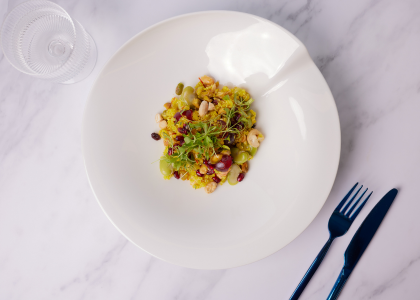
A plant-based recipe to celebrate great chefs around the world
This International Chef's Day, we're raising a fork to the hard-working and passionate chefs across the world, including Le Cordon Bleu chefs in training, ...

Food magazines, websites and food blogs of renowned publications (New York Magazine’s Grub Street and National Geographic’s The Plate, for example), are geared to a well-defined, specialised audience. Identify the one you wish to pitch to and understand its editorial focus. Know its personality and energy. Who are its intended readers or viewers? Your idea should be interesting and novel, yet fit into its content mix.
These few lines will decide the fate of your article, so take pains to craft them. A stellar pitch should offer a crisp yet compelling outline of your concept. Establish, right off the bat, what your story is about. Captivate the editor with your insights and arguments, leaving him or her with ample food for thought. Communicate what makes you the best person to write this piece.
Once your idea gets the nod, get to researching, and writing! Penning an investigative piece about food labels? Bring in layers of data, reporting and analysis. Show your readers that their health hinges on reading the fine print. Reviewing a restaurant? Offer details of why a dish impressed or disappointed. Be objective and balanced.
The opening paragraph sets the tone for the entire piece. Hook your readers from the get-go. Learn from your favourite food stories. How did they pull you into their world? By stirring up a controversy—“The best hummus—that’s debatable.”) Or by sharing something new—“Ever heard of lychee wine?” Did they sum up the gist of the story right at the start? Or build a sense of tension?
“Nothing is in the intellect that was not first in the senses," said Aristotle. Eating is a sensory experience, as is reading about things edible. Conveying the colour, sound, taste, smell and texture of food arouses the senses. Talk about the coral hue of the salmon, the sizzle of bacon, the sandy texture of shortbread, the torched-sugar aroma of crème brulee. Evoke a sense of place (the air that had a briny taste to it). Make your audience live the story you’re telling. Caveat: Dazzle with your descriptions, but don’t resort to purple prose.

This will largely depend on the type of article you’re writing. Is it an opinion piece, a chef profile, a reported story or a personal essay? Regardless of the genre, your piece should be coherent, cohesive and work as a whole. How does the narrative flow from one paragraph to the next? Is it continuous, or do you need subheads to help readers navigate the article? Is the writing well paced?
A distinctive style brings flavor to your writing. It also reinforces your expertise and deep knowledge of food. Expand your culinary lexicon. Describe the velvety mouthfeel of dark chocolate, the fruity tartness of pineapples, the lemony whiff of a soufflé (that soufflé again). Stale, generic words like “delicious,” “fabulous” and “yummy” are best avoided. Drop them like moldy bread.
Errors can spoil the best of food stories. Or worse, land you in the soup. Make sure your facts are right. Never assume anything. (So you know French fries are from Belgium, but did you know Margaritas aren’t Mexican?) Know your subject thoroughly. When in doubt, double-check with an expert.
We don't write how we talk. Grammar is essential to both correctness and style. A good sentence has a kind of rightness to it. Know your grammar usage, punctuation, and compound words (eggbeater, not egg-beater). This is important for you as you copy edit and prepare your final copy. Read through your piece several times. Look out for typos, inconsistencies and redundancies. Tighten your text.
No eye-grabbing headline? Your masterpiece might never be read. A good title should be catchy yet appropriate, clever yet simple. Keep it short and sweet. Three to five words are ideal—never go beyond eight. I loved ‘Chop Talk” from Gourmet (about a piece on where to buy racks of lamb for grilled lamb chops). And “Here’s looking at you, Squid” from Lucky Peach.
Copyright © 2026 Le Cordon Bleu International B.V. All Rights Reserved.